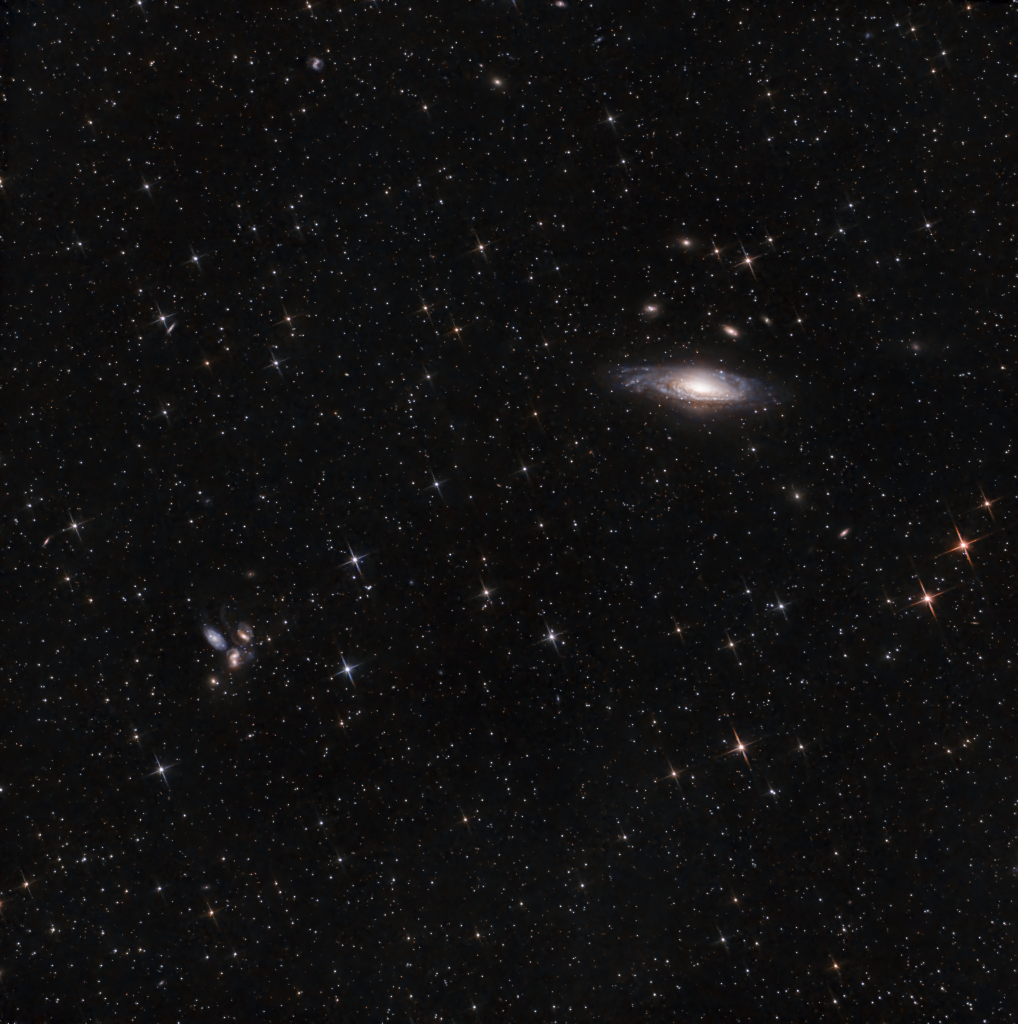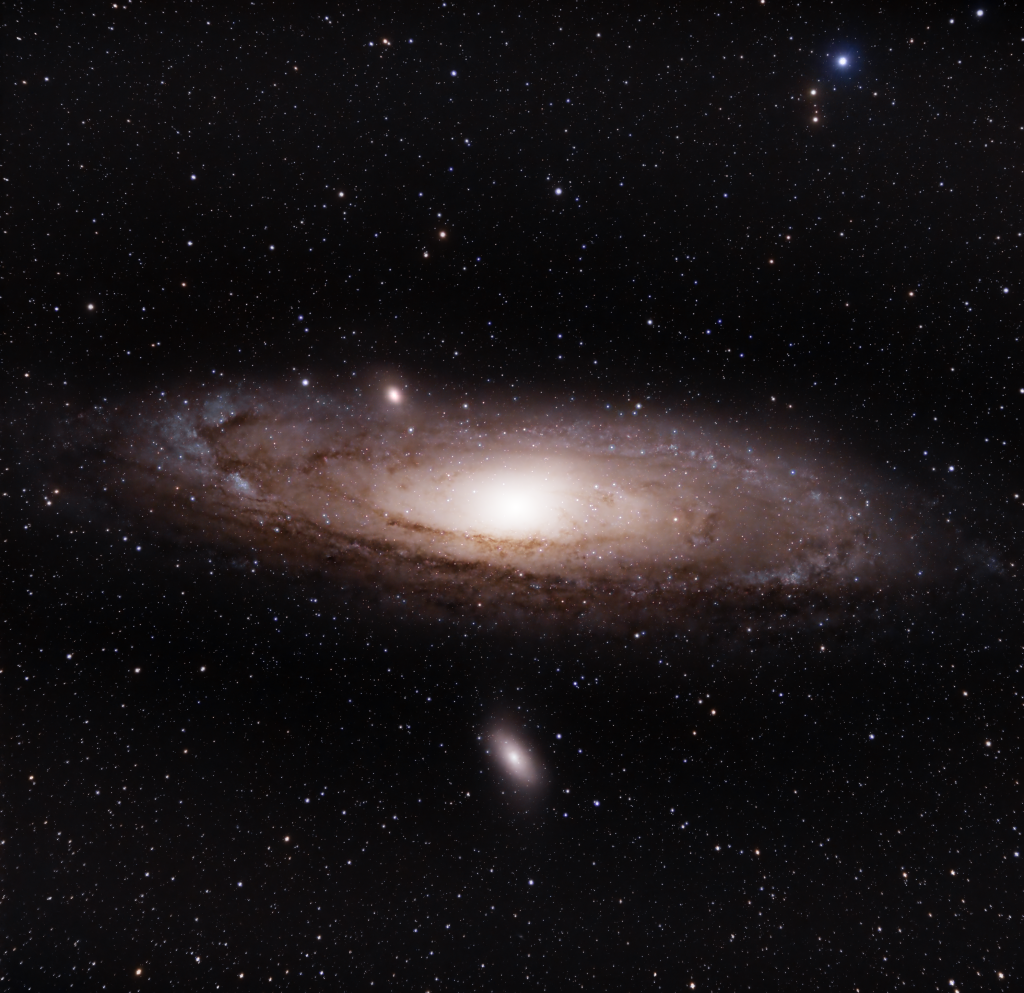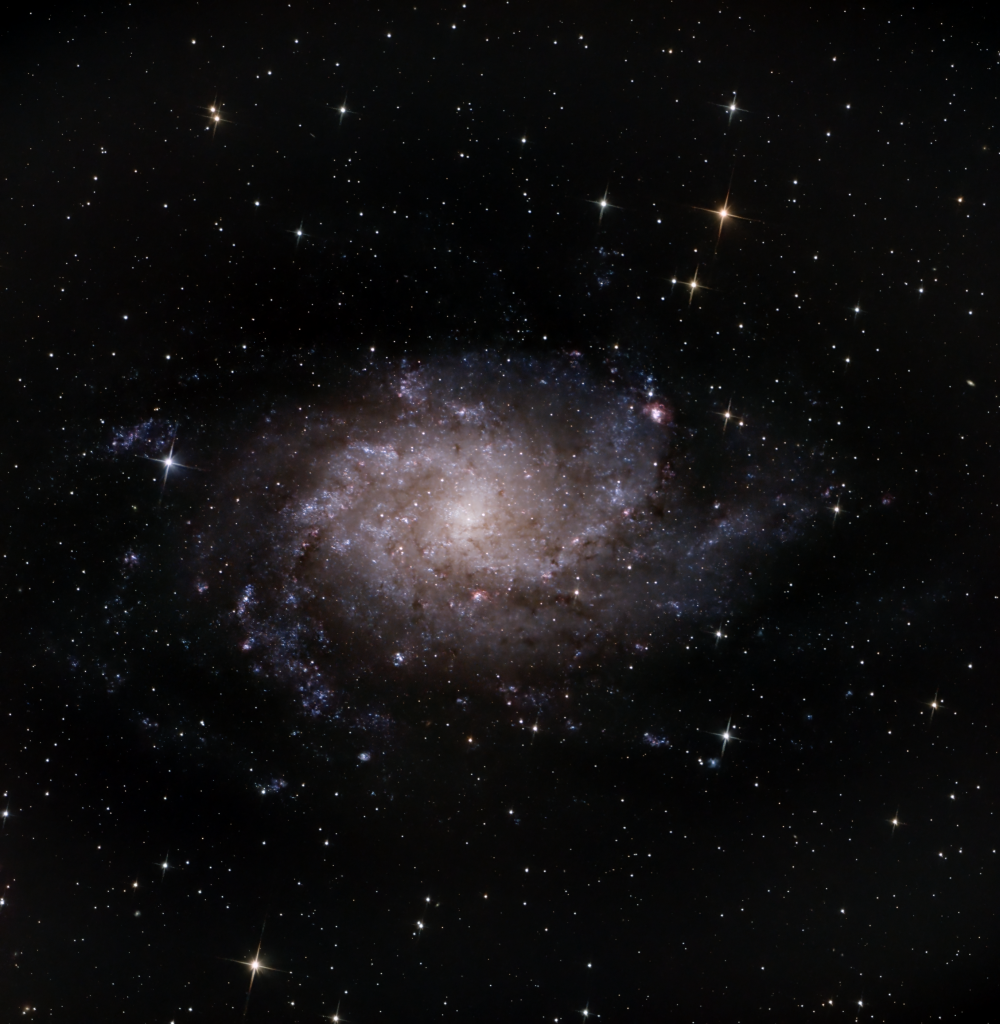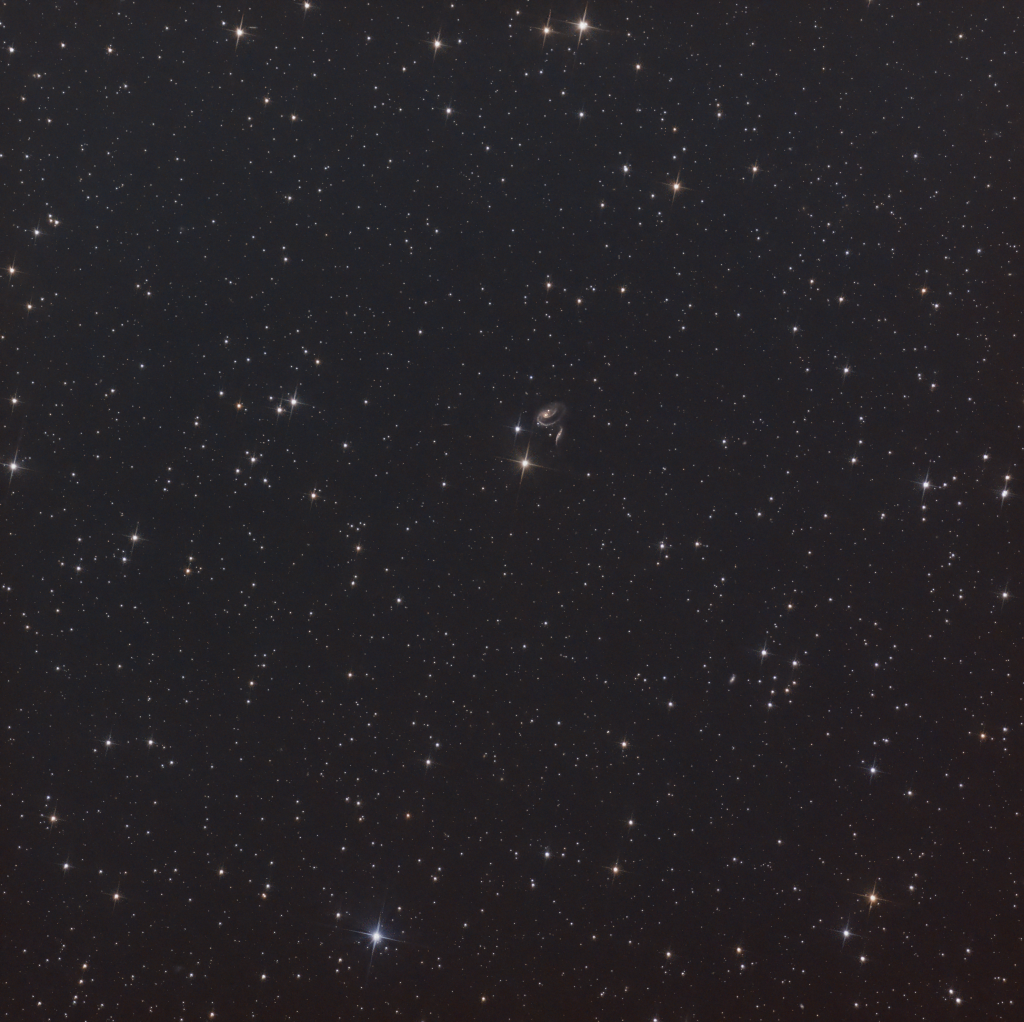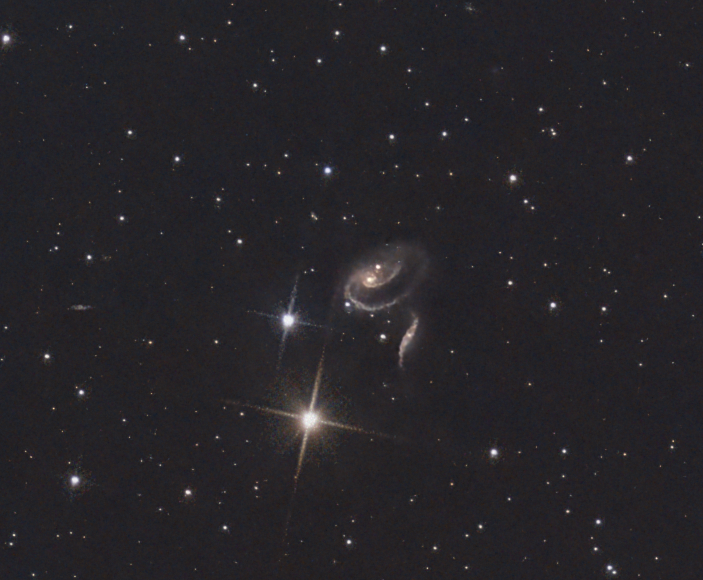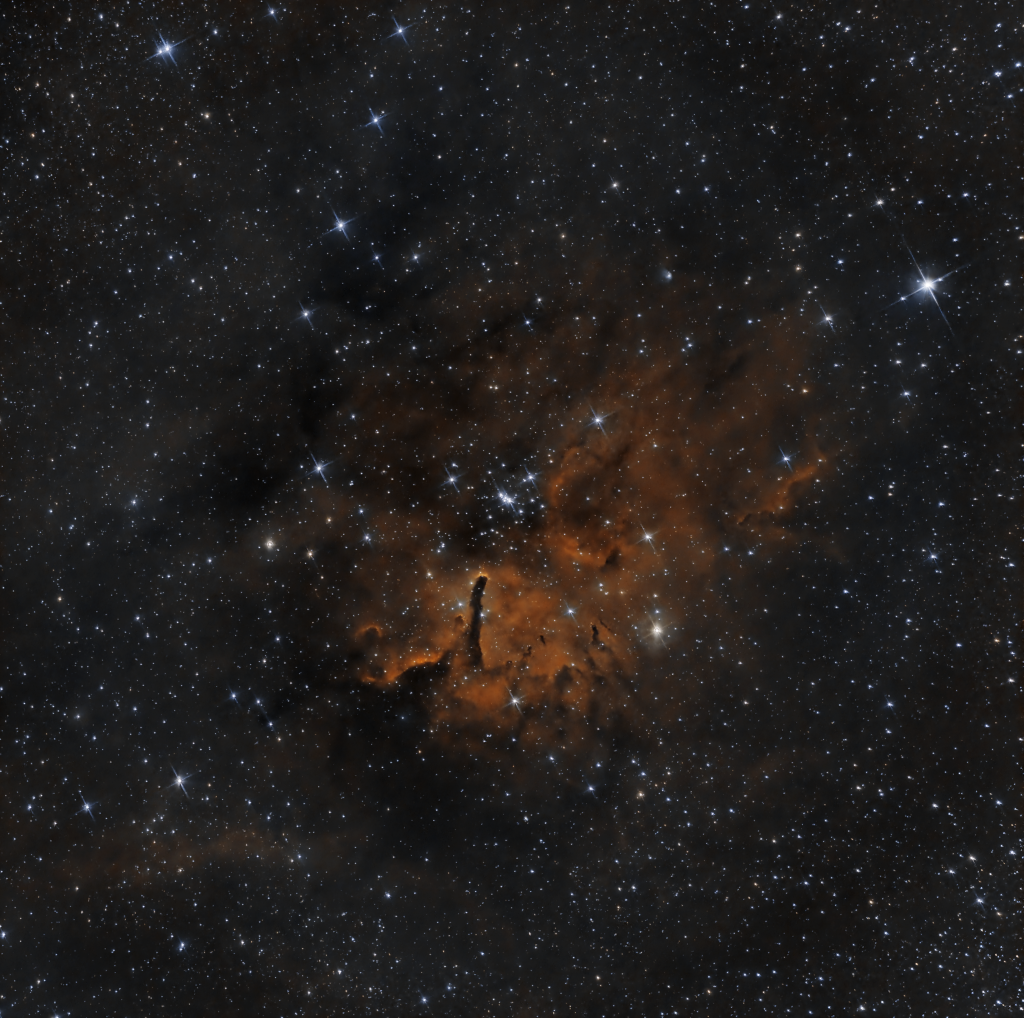Stephan’s quintet
There’s a lot happening in this picture. The big galaxy in the upper right is NGC7331, it’s a galaxy that is similar in size and structure as our Milky Way – about 40 million light years away. The smaller galaxies around it are actually much further out at 300-350 million light years.
The small group of galaxies on the bottom left is Stephan’s Quintet. This group of galaxies was imaged recently by the JWST and is sitting in a rich field of galaxies in the constellation of Pegasus.
There are many more galaxies in this field of view and I’m trying to figure out as much as possible about them.
On the downside there are some obvious guiding issues going on in this picture that I really need to fix. Especially if I want to hunt down more of these elusive ARP objects.
